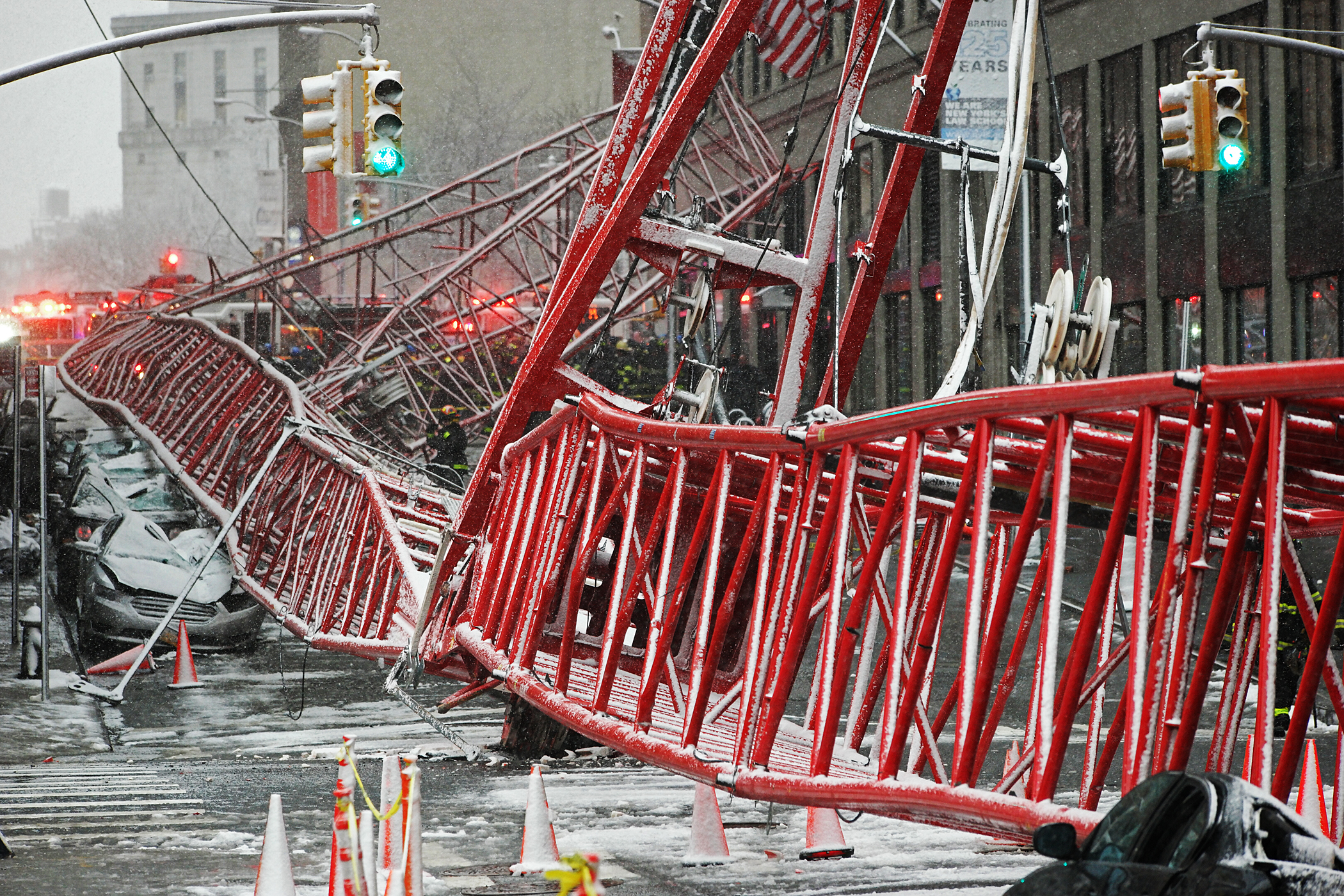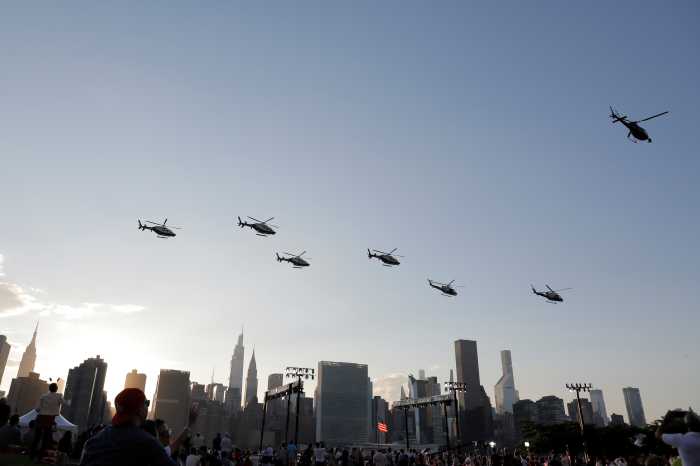
The falling crane killed one person, injured three, and crushed several cars parked along Worth St. on Feb. 5.
BY YANNIC RACK
Tribeca residents scarred by the fatal crane collapse that shook Lower Manhattan in February are calling on the city to immediately implement safety reforms outlined in a new report commissioned to address the issue.
A special panel convened by Mayor de Blasio to review policies around crane safety after a 565-foot crawler crane toppled over on Worth St. and killed an Upper West Side man on Feb. 5 recommended last week that the city phase out older cranes and replace them with newer machines equipped with a wide range of safety features, allowing them to be monitored more closely.
But local residents, who were already worried about an impending catastrophe just days before the crane collapsed, warn that it will take considerable pressure on City Hall to actually implement the reforms, which they expect will face considerable resistance from developers and the construction industry.
“Now the [crane] industry is going to get into this, and it’s going to be hard to get some of these regulations through, because they’ll cost money. There’s going to be some opposition to this,” said Jeff Ehrlich, who sits on Community Board 1’s Tribeca Committee. “This is a great study, and we want this to be taken very seriously.”
The Crane Safety Technical Working Group, made up of former city officials and engineers, issued its 56-page interim report last week. It will issue a final report once the city’s as-yet-unfinished investigation into the accident is complete, and locals want to maintain momentum for reform, lest the panel’s efforts go to waste.
“It’s a nice academic document with good suggestions, but this report could be like other special blue ribbon commissions — it could just disappear altogether,” said fellow Tribeca Committee member Bruce Ehrmann, who lives across the street from 60 Hudson St., where the giant crane was being used to lift generators onto the roof.
The panel’s recommendations so far include adopting a pending bill that would impose an age limit on cranes working in the city, and equipping them with anemometers — which measure wind speeds — as well as data-logging “black boxes” and GPS tracking technology.
“When enacted, these recommendations will strengthen the city’s already robust regulatory framework by applying emerging best practices with technological tools, crane engineering, and design enhancements, ensuring the operation of cranes in New York City remains the safest in the world,” the report states.
The Worth St. crane collapse involved a crawler crane with a 565-ft-long boom and jib that collapsed when its operator tried to secure it amid strong winds, while crews on the ground were clearing the street of pedestrians. The falling crane seriously injured three people and killed 38-year old mathematician David Wichs, whose widow is now suing the city for $600 million.
Three days after the accident, Mayor de Blasio announced new safety regulations lowering the maximum wind speed at which cranes can operate to a sustained 20 mph or gusts of 30 mph — significantly lower than the previous guidelines of steady wind speeds at 30 mph or gusts of 40 mph.
But in March, the city once again updated its regulations after the working group recommended returning to the previous rule, outraging locals.
“The city regulations are terrible, to my mind. I’m kind of stunned by it,” Ehrlich said of the reversal. “[But] the new recommendations are great, they really nailed a lot of stuff.”
Ehrlich said equipping all cranes with anemometers made sense, especially considering that Downtown’s narrow canyons are often much more windy than other areas where wind measurements are currently taken for the city as a whole.
“The way the wind speed is measured through the National Weather Bureau, which is taken in Central Park — that has nothing to do with Worth Street,” he said. “It could be 15 mph in Central Park, [but] Worth Street is always windy.”
CB1’s Tribeca Committee unanimously approved a resolution last week calling on the city to implement the suggestions outlined in the report.
“We’re commending the members of the working group, and we urge the mayor’s office to move as quickly as possible,” said CB1 District Manager Noah Pfefferblit.
A spokesperson for the city’s Dept. of Buildings said the agency was currently reviewing the recommendations.
Ehrmann, who had sounded the alarm with local elected officials on the night before the collapse after he saw the crane swaying dangerously in the wind, said he was encouraged by some of the new rules — including a required safety zone that would need to be cordoned off for particularly large cranes, and would effectively ban any such machine from being used on streets as narrow as Worth St.
He also said it shouldn’t be up to locals to pressure the city into doing the right thing, but Tribeca residents wouldn’t shrink from the task.
“This document should be studied very closely, taken very seriously, and be moved upon,” Ehrmann said. “This community, which suffered because of the collapse, will stay on top of it.”


































